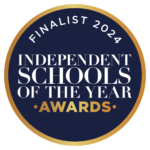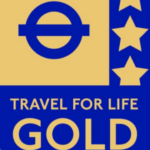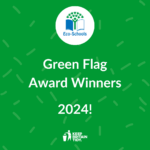Geography Trip to Iceland

Over three action-packed days in Iceland, students explored dramatic landscapes shaped by volcanic and glacial forces. Highlights included visiting abandoned Grindavik, walking between tectonic plates, hiking a glacier, experiencing waterfalls like Skogafoss and Gljufrabui, and learning about coastal and volcanic processes. The group gained unforgettable insights into Iceland’s powerful and ever-changing natural environment.
Read our day-by-day itinerary below:
Day 1
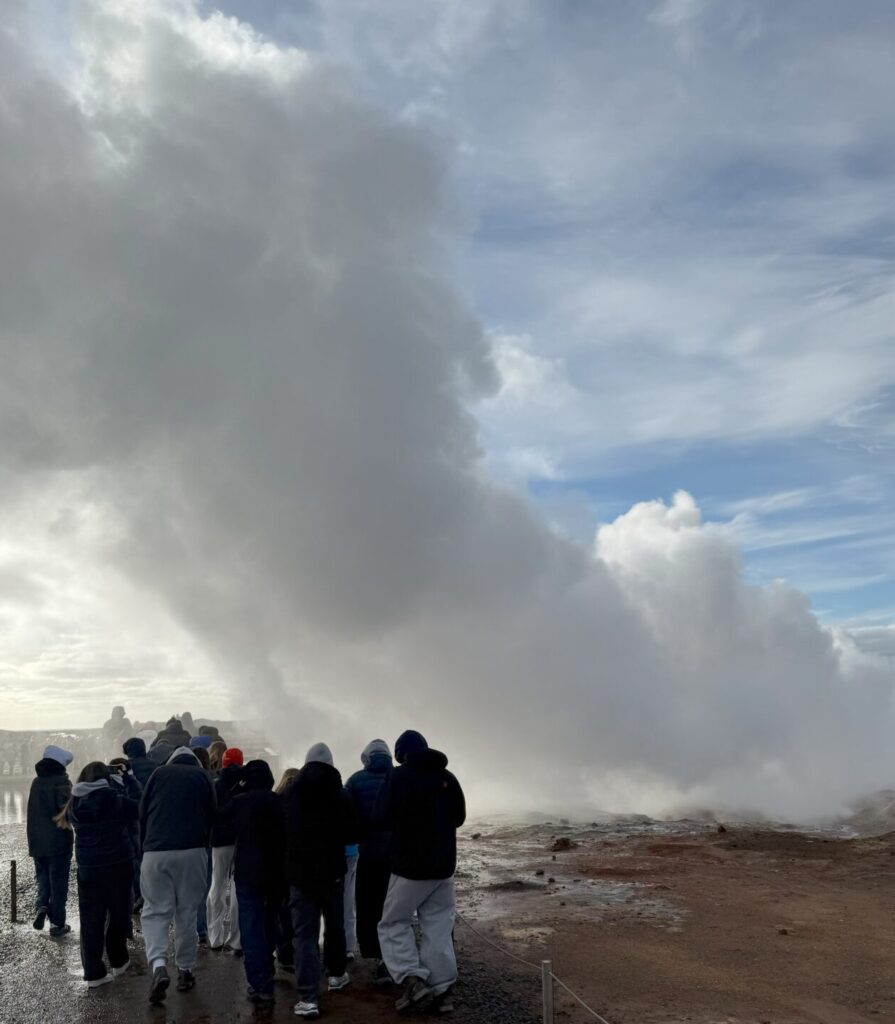
We had a wonderful rep, Guy, whose 60th visit it was to Iceland. He had lots of anecdotes, didn’t ask many questions, and twice, and very publicly, usurped Mr Harris when in his full geography swing. A distinctly forgettable battle of the intellectual lightweights was inevitable.
We began with an eerie drive through the now abandoned town of Grindavik. This time last year, as lava flows began to sprawl across the town’s outskirts, the government decided that the town must be evacuated permanently. Seeing the steamy remnants of the lava flows, like jet black, irresistible rivers of igneous rock, was both jaw droppingly impressive and humbling in equal measure. As we departed the town, the sight of one new fissure, with lop sided buildings and fractured roads subsiding into a cavity in the ground, captured the true power of plate tectonics.
We then visited the bridge between the continents. With spanning views reaching the glaciated mountains to the West and the Atlantic to the South, we here could really comprehend the multiple landscapes of Iceland. The bridge literally (almost..) connects the Eurasian tectonic landmass to the North American tectonic landmass. The mid-Atlantic ridge, the world’s largest geological feature, starting in Iceland and extending right through the Atlantic ending its journey at Antarctica, became suddenly small, local, conquerable. Y10 GCSE geographers enjoyed some geological analysis of the basaltic igneous rock, some of the youngest rock on the planet, with the solidified remnants of lava bubbles hinting at the rock’s fluid origins.
We then visited the Gunnuhver hot springs with super-charged funnels of egg-scented steam clouding the sky. Students here received a harsh reminder about the importance of a waterproof jacket and their hats and gloves. The deafening sound of glacial meltwater violently boiling as it slithered too close to underlying geothermal heat drowned out any attempts from Guy to deliver a lecture. The dusty orange iron oxide landscape juxtaposed with thunderous white steam and black igneous rock highlighted this country of contrasts and constant change.
Day 2
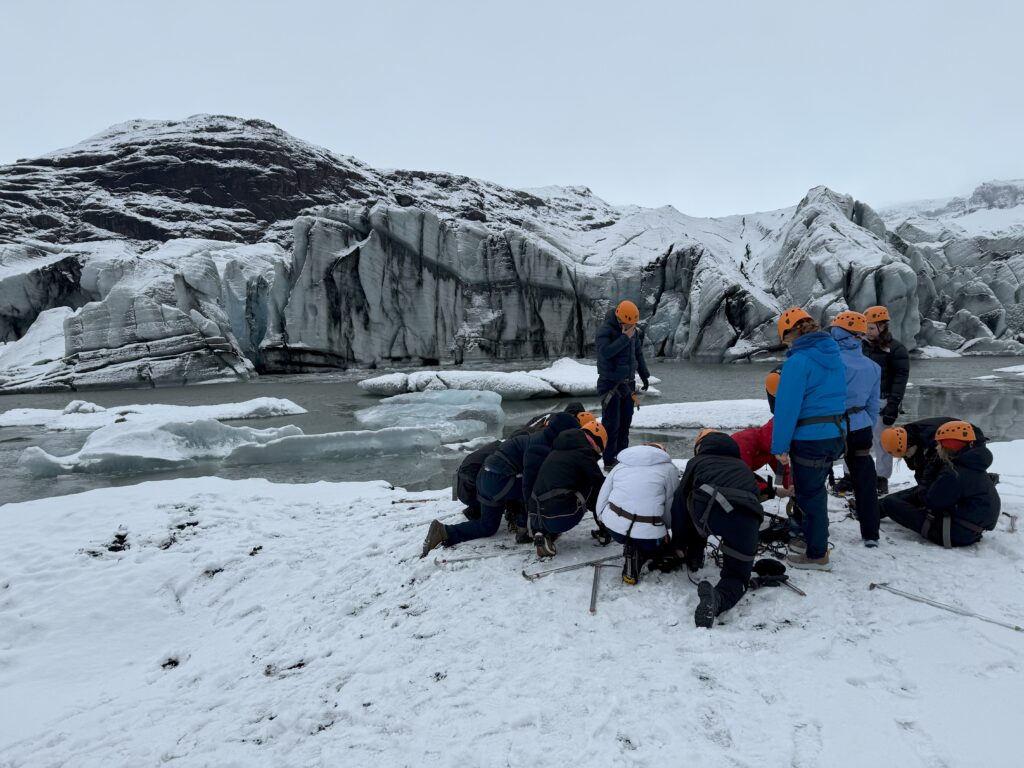
We began with a visit to world famous Skogafoss – a thunderous waterfall famous more so for featuring in a Justin Bieber video than its unique formation. A quick hike up 496 steps took us to the viewing gallery overlooking the steamy abyss below. Previous years had seen students able to venture right into the gorge on the banks of the plunge pool, however the weather over the past weeks had been particularly stormy and so a burgeoning river channel cut off excess. Nonetheless, the deafening fizz and staggering views guaranteed a memorable experience. The teacher’s advice not to get hiking boots and socks wet so early in the day went largely ignored.
Solheimajokull glacier hike came next up as the clouds disconcertingly crept in and we began with a sobering reminder that every year the hike to the glacier got 5 minutes longer. Snaking through jagged crevasses, armed with crampons and ice pick axes, we emerged onto the surface of the glacier and were instantly greeted with cripplingly cold winds. Keen to avoid being exposed for too long, we returned to the crevasses and tiptoed through a sparkling turquoise ice tunnel before returning to solid ground. Spectacular, intimidating, humbling!
Further visits to the Renishfjara black sand beaches and Dyrholaey headland gave our GCSE students a useful (and much needed as it transpired) recap of their coastal processes, before a Lava show demonstration of lava flows and characteristics succeeded in making these terrifyingly vast tectonic processes more bitesize to understand. A great day in all, with more to come tomorrow.
Day 3
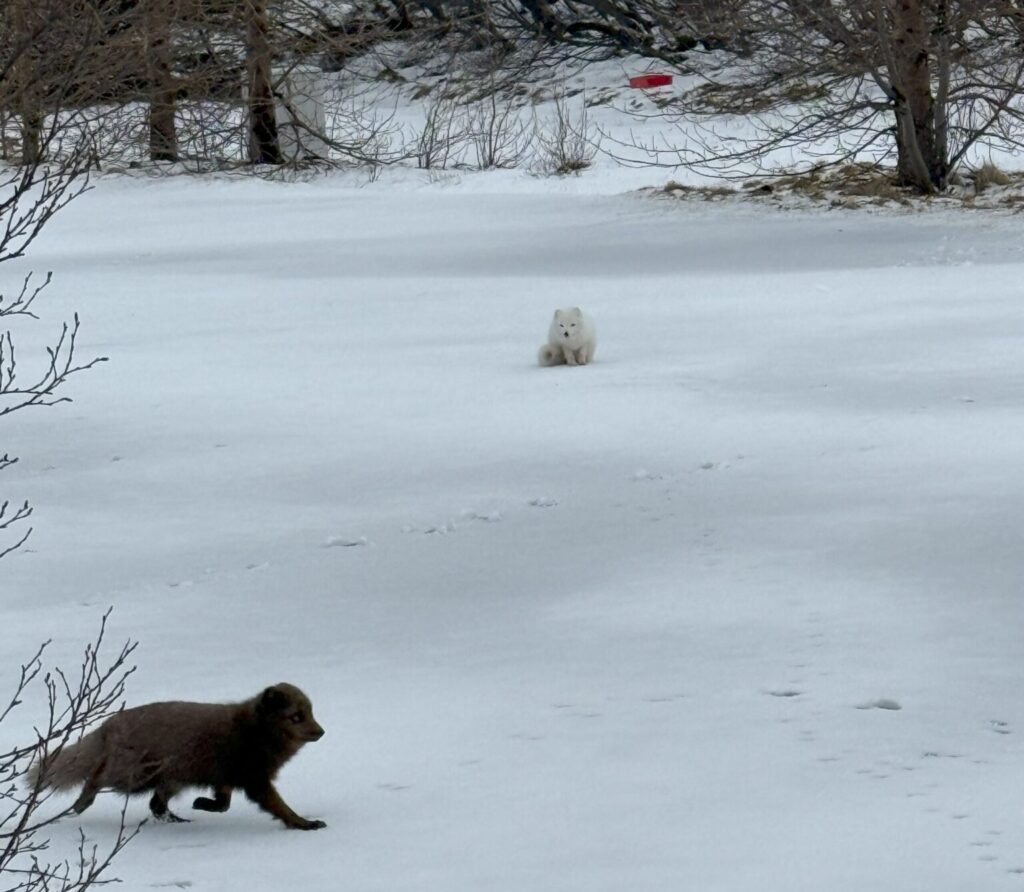
 A brilliant day involving taking a monster truck ride up the glacial outwash planes, a quick encounter with some arctic foxes, a snowball fight in a blizzard under an outlet glacier, monster truck racing on the black sand beaches, an explore to Seljalandfoss and Gljufrabui waterfalls, and a visit to the local town’s swimming pool.
A brilliant day involving taking a monster truck ride up the glacial outwash planes, a quick encounter with some arctic foxes, a snowball fight in a blizzard under an outlet glacier, monster truck racing on the black sand beaches, an explore to Seljalandfoss and Gljufrabui waterfalls, and a visit to the local town’s swimming pool.
Gljufrabui waterfall is always one of the highlights of the trip, tip toeing up a narrow gorge on precarious stepping stones into a little opening with the waterfall thundering around us. It is impossible to get closer to nature than this. A quick chat to some local Icelandic families – “Why are the British children so noisy and wild? I am quite sure the sign suggests only one person down the slide at a time” illuminated both our student’s wild behaviour and their comparatively poor grasp of their own language.
There was some volcanic activity overnight in the Reykanes area, around 80km west. The area was exceptionally volcanically active and eruptions have been anticipated and are being monitored closely. Eruptions were effusive – they were frequent but very gentle. Our accommodation was far from this area, and the only risk it poses to us is potentially disrupted roads when accessing the airport. However, there was no cause for concern – the volcanic activity is kept within the expected activity in the area.
-Mr Harris, Head of Geography


